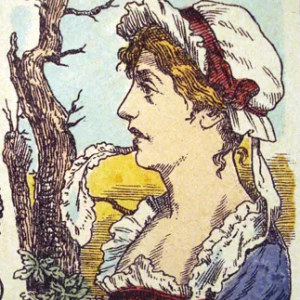IQ puzzles often look like they belong in a middle school math book — simple, clean, and logical. But every now and then, one comes along that completely messes with your expectations. This brain teaser is exactly that kind of puzzle.
It reads: “Which of the following has four, eight and one nine?” At first glance, it feels like a straightforward counting question. You’ve got four multiple-choice options, and your job seems clear: count the numbers, match them to the clue, and boom — answer unlocked. But not so fast.
This one’s a trap in disguise. Let’s take a deeper look.

The Question That Triggers Overthinking
Here’s the puzzle again:
“Which of the following has four, eight and one nine?”
And your choices:
- A. 88889
- B. 4819
- C. 888819
- D. 489
Seems easy, right? Just count how many 8s and 9s are in each. That’s what the question’s asking… or is it?
Video: Which of the following has four, eight and one nine? 😃🤔
Breaking It Down: What Are They Really Asking?
Here’s where most people trip up. The wording says “has four, eight and one nine” — which sounds like a count. But the trick is in how you interpret that sentence. It’s not actually asking how many 8s or 9s are in the number. It’s asking which of the options sounds like “four, eight, one, nine” when read out loud.
Yeah — it’s a language riddle, cleverly disguised as a number puzzle.
Analyzing Each Option Like a Detective
Let’s read each option out loud and see what they sound like:
Option A: 88889
Spoken aloud: “eight eight eight eight nine”
This option has four eights and one nine — so mathematically, it checks out. But the puzzle isn’t just about quantity. It also says “four” and “one.” There’s no “four” or “one” in this number. So…
→ A: Sounds right, but it doesn’t say “four” or “one.”
Option B: 4819
Spoken aloud: “four eight one nine”
Now this matches the puzzle perfectly. The digits are exactly what the question describes — “four, eight, one, nine.” Not only do the numbers appear as-is, but when spoken, they mimic the puzzle word-for-word.
→ B: This is the perfect match.

Option C: 888819
Spoken aloud: “eight eight eight eight one nine”
Again, we have four 8s and one 9, plus a 1. That covers the “eight and one nine” part, sure. But where’s the four? It’s not there. And remember, the puzzle includes the word “four.”
→ C: Close, but missing the “four.”
Option D: 489
Spoken aloud: “four eight nine”
This one has the “four” and the “eight” and the “nine” — great start. But it’s missing the “one” part from “one nine.” Without that word “one,” it doesn’t match the phrasing of the original question.
→ D: Not quite — no “one.”
Why the Answer Is B: 4819
Let’s recap what the puzzle really wants. It asks for a number that sounds like “four, eight and one nine.” Not four 8s. Not one 9. It’s literally about how the digits are spoken.
And Option B: 4819 hits all the marks:
- “Four”
- “Eight”
- “One”
- “Nine”
It’s the only option that reads back exactly as the question was phrased. That’s the kind of twist that catches people off guard — and why this puzzle’s gone viral.
Why This Puzzle Tricks So Many Smart People
Video: Which of the following has four, eight and one nine
Let’s be honest. Most IQ puzzles are visual or numeric. You expect to calculate, not to listen. That’s what makes this riddle so brilliant — it disguises a wordplay puzzle as a numbers game.
When you first see “four, eight and one nine,” your brain says, “Count the digits.” But the real question is hiding in plain sight. It’s not about quantity — it’s about phonetics. It’s like hearing a sentence through a walkie-talkie and trying to piece together the message from broken static.
That shift — from logic to language — is what messes with even the sharpest minds.
What This Teaches About Lateral Thinking
This little riddle is more than just a brain teaser — it’s a lesson in lateral thinking. In other words, it challenges you to think beyond the obvious.
It shows how we’re often locked into one way of interpreting questions. We look for the logical or mathematical path, but sometimes the solution requires listening instead of calculating — or seeing a pattern in how something is said rather than what is said.
A Quick Tip for Solving These Tricky Puzzles
When you come across a puzzle that doesn’t seem to make sense at first, ask yourself this:
“Is there another way this could be interpreted?”
Sometimes, the answer is hiding not in the math, but in the language, structure, or even pronunciation.
And don’t be afraid to read it out loud. You’d be surprised how often hearing the words can trigger that “a-ha!” moment.
Conclusion: A Simple Puzzle With a Clever Twist
This viral IQ riddle — “Which of the following has four, eight and one nine?” — is a perfect reminder that intelligence isn’t just about crunching numbers or solving formulas. It’s about staying sharp, curious, and ready to question the obvious.
The correct answer, Option B: 4819, isn’t the most complicated choice. It’s just the one that listens carefully and fits the question word for word.
So, if you picked it right — hats off to you. And if you didn’t, don’t sweat it. You’re in good company. Just remember: sometimes, the smartest move is to stop counting and start listening.


